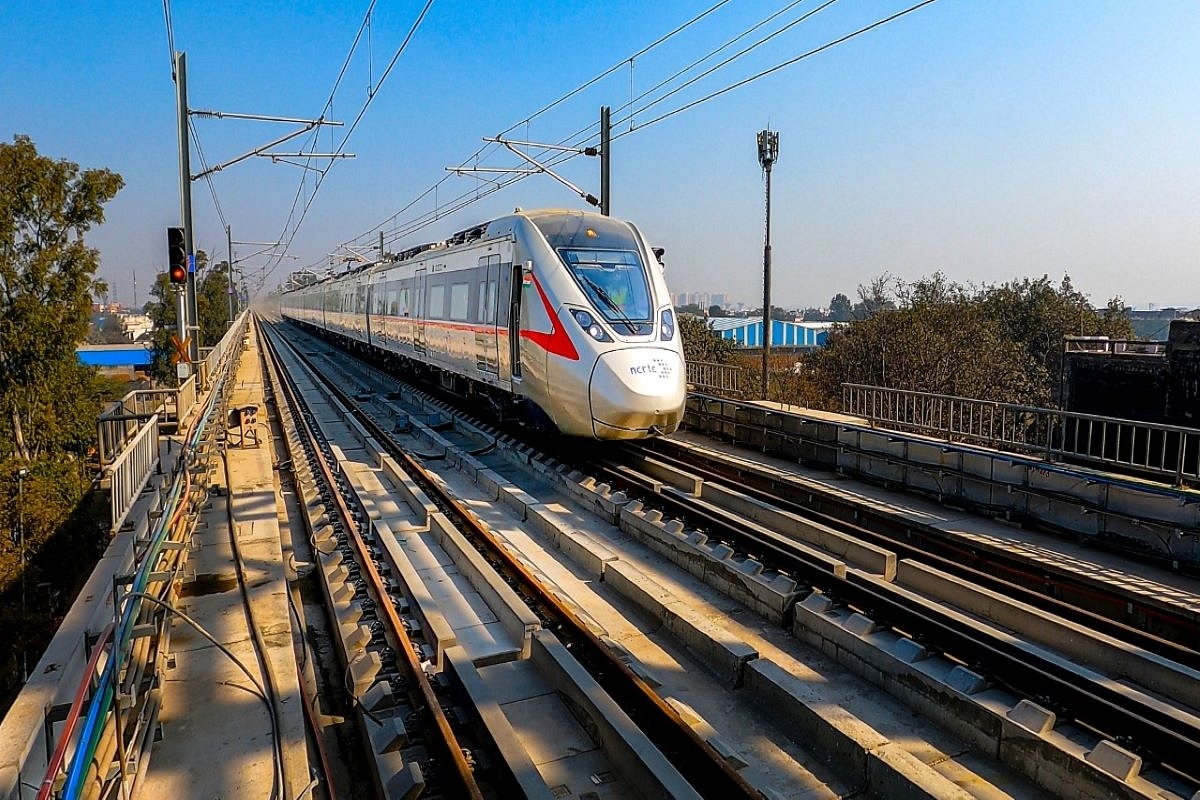Infrastructure
Budget 2024: Centre To Support Metro Rail Expansion And NaMo Bharat In Major Cities, Announces Nirmala Sitharaman

The RRTS is a new, rail-based, high-speed, and high-frequency transit system. (Representative Image)
In a boost to urban transport, Finance Minister Nirmala Sitharaman announced that metro rail and NaMo Bharat will be expanded to major cities.
"Expansion of these systems will be supported in large cities focusing on transit-oriented development," Sitharaman said while presenting the Interim Budget in the Lok Sabha.
In her hour-long budget speech, Sitharaman said metro rail and NaMo Bharat can be the catalyst for the required urban transformation.
As of November 2023, India has 895 kilometres (556 miles) of operational metro lines.
According to Union Minister of Housing and Urban Affairs Hardeep Singh Puri, India's metro network will surpass the United States' in the next two to three years, making it the second largest in the world. The metro network in India is currently the third biggest in the world.
"In 2014, only 248 km of metro rail was operational in India. Merely in 9 years, 895 km of metro lines are operational in 20 different cities today," he said.
Popularly known as Namo Bharat, the Regional Rapid Transit System (RRTS), is a new rail-based system with a designed speed potential of 180 kmph and operational speed potential of 160 kmph, making them semi-high speed train sets.
The initiative is designed to provide high-speed trains for intercity commuting every 15 minutes, which can go up to a frequency of every five minutes according to requirement.
With an average speed of 100 kmph, these indigenously manufactured trains will be much faster than the metro and the Indian Railways' trains.
Currently, three RRTS corridors are planned for implementation in the the National Capital Region in the first phase. These include the 82-km-long Delhi-Meerut, 198-km stretch of Delhi-Gurugram-SNB (Shahjahanpur-Neemrana-Behror Urban Complex)-Alwar and the 103-km Delhi-Panipat stretch.
In the next phase(s), five additional lines will be developed. These are Delhi–Faridabad–Ballabgarh-Palwal, Ghaziabad-Khurja, Delhi- Bahadurgarh-Rohtak, Ghaziabad-Hapur and Delhi-Shahdara-Baraut.
Support Swarajya's 50 Ground Reports Project & Sponsor A Story
Every general election Swarajya does a 50 ground reports project.
Aimed only at serious readers and those who appreciate the nuances of political undercurrents, the project provides a sense of India's electoral landscape. As you know, these reports are produced after considerable investment of travel, time and effort on the ground.
This time too we've kicked off the project in style and have covered over 30 constituencies already. If you're someone who appreciates such work and have enjoyed our coverage please consider sponsoring a ground report for just Rs 2999 to Rs 19,999 - it goes a long way in helping us produce more quality reportage.
You can also back this project by becoming a subscriber for as little as Rs 999 - so do click on this links and choose a plan that suits you and back us.
Click below to contribute.
Latest